Capsular contracture is a well-known and not so rare complication of breast augmentation surgery with implants. Over the years and with improvements of breast implant technology, surgical techniques and understanding what the precipitating factors may be, its incidence has substantially decreased but it still does occur.
The appearance of capsular contracture is usually not in the immediate peri-operative period but it can clinically develop within several months or even years later. Its manifestations include increasing firmness of the breast, distortion, narrowing of the implant footprint and greater projection. There is often associated migration of the implant higher up on the chest wall which can appear as an abnormal fullness that is almost impossible to hide.
If it is diagnosed early in its onset, sometimes capsular contracture can be stopped and stabilized or even reversed by non-operative means. This can involve the intake of high doses of vitamin E or the usage of other medicines along with implant manipulation. When this approach fails or is inadequate, then breast revision surgery is indicated.
For capsular contracture, surgery ideally should involve the removal of the firm scar tissue that has formed around the implant (capsule) and is squeezing it and the placement of a new breast implant in the pocket (if one is still desired). This is usually performed under general anesthesia as an outpatient. The following patient of mine well exemplifies this.
This late 40’s woman had her second set of breast implants placed 18 years previously, textured surfaced silicone ones. She had done extremely well up until around a year ago when she noted the development of hardness on the left breast then soon thereafter, of her right side. A diagnosis was also made of bilaterally rupture breast implants (photos A, C and E).
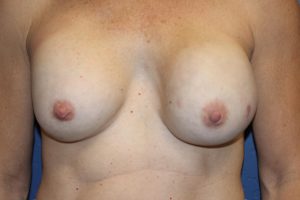
A.) Capsular contracture – frontal view
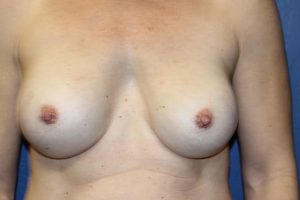
B.) 8 months after surgery

C.) Before – side view
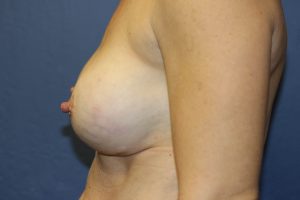
D.) After – side view
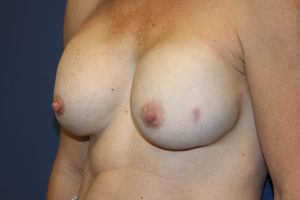
E.) Before – oblique view
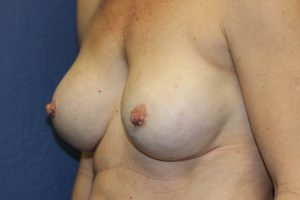
F.) After – oblique view
Her breast revision surgery involved complete removal of the capsules around both breast implants, removal of the ruptured implants and placement of new, similar sized but differently configured silicone implants. She was extremely happy with the outcome and has had no issues since surgery (photos B, D and F – 8 months post-op).
For more information on capsular contracture, treating ruptured breast implants or breast revision surgery in general, please call my office to schedule your complimentary consultation.
Steven H. Turkeltaub, M.D. P.C.
Scottsdale and Phoenix, Arizona
